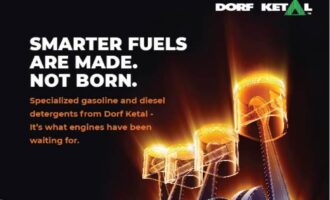Closing the gap
By Cristine Villena Amurao
For several decades now, the world, led by Europe and the United States have been trying to decrease emissions of nitrogen oxides (NOx), carbon dioxide (CO2), particulate matter (PM) and other pollutants.
Part of the European strategy to meet environmental targets laid out in the 1997 Kyoto Protocol was to pivot to diesel engines because it produces less CO2 emissions than gasoline engines. Thus, diesel vehicles rapidly gained market share in Europe from 10% in the 1990s to 55% in 2012, dropping slightly in 2014 as electric vehicles started to gain some traction.
In addition to concerns about CO2 emissions, Europe has increasingly restricted NOx emissions, which for diesel cars was reduced from 0.18 g/km under Euro 5/V to 0.080 g/km under Euro 6/VI. Seventeen of the G-20 countries follow the European regulatory pathway for vehicle emissions control and some Asian and Latin American countries are on Euro 2/II, Euro 3/III or Euro 4/IV standards.
NOx emissions unquestionably have high health costs, ranging from increased rates of asthma attacks and other respiratory illnesses to cardiovascular-related effects and premature deaths. Especially vulnerable are the young, old, immune-compromised and those with pre-existing respiratory disease.
However, the clean diesel promise has been tainted by the recent “dieselgate” scandal. In June 2016, the Volkswagen Group, comprised of Volkswagen AG, Audi AG, Volkswagen Group of America, Inc. and Volkswagen Group of America Chatanooga Operations, LLC, agreed to a landmark partial court settlement with the U.S. Environmental Protection Agency (EPA). Volkswagen admitted to violating the U.S. Clean Air Act and cheating during emissions testing by installing “defeat devices” into a number of their diesel vehicles.
A defeat device is anything that “bypass, defeat or render inoperative elements of the vehicles’ emissions control systems.” The software that was integrated into their auxiliary emissions control device (AECD) detected when the car was undergoing emissions testing to maximise test results.
Volkswagen agreed to pay USD10.033 billion to the Federal Trade Commission’s stipulated order and class action settlement for affected consumers, USD2.7 billion to remediate the excess NOx emissions from affected 2.0 litre diesel vehicles, plus, another USD2.0 billion to invest and promote the use of zero emission vehicles (ZEVs) and ZEV technology. And this is just the beginning of Volkswagen’s mea culpa.
Volkswagen dealers are also asking for compensation and since the partial settlement doesn’t cover the affected 3.0 litre vehicles that the company admitted to also having installed the defeat device in, that will probably be another big settlement. Several U.S. states are also suing so the cost to Volkswagen is bound to increase exponentially. The California Air Resources Board and Environment Canada are also testing all 2015-2016 light-duty vehicles to screen for similar defeat devices. Porsche, Mercedes Benz, Renault, and even Bosch (Volkswagen’s supplier), are also now in the crosshairs of the expanding scandal and investigation in the U.S. and Europe.
To put it into perspective, the problem is not exclusive to Volkswagen. It is everyone’s problem, as real world NOx emissions of diesel cars far exceed those of current standards and it has a significant impact on health and society.
According to a 2014 analysis by the International Council on Clean Transportation (ICCT), there is a big difference between the official certification or type approval emissions of NOx from new diesel vehicles compared to actual emissions during everyday use of these passenger cars. Using portable emissions measurement systems (PEMS), real-world NOx emissions were approximately seven times higher than the Euro 6 limit of 0.08 g/km.
A 2011 study, published by Carslaw et al., showed similar dismal results. The study on pass-by emissions of more than 80,000 cars in the United Kingdom showed that overall NOx emissions were more than four times above the allowable limits for new cars.
Type Approval Reform
Unlike in the U.S., where a federal agency can monitor compliance and set standards for all auto manufacturers, each country within the EU has its own regulator and an automotive company can choose which national type approval authority to use to get approval for a particular vehicle. As such, a single entity cannot compel a European-wide recall. A new type approval framework regulation (TAFR) proposal was presented to the European Commission in January 2016. It called for increased independence and quality control of technical services and European-level tests to monitor for compliance. The Transport and Environment Organization further proposed better oversight of national regulators through audits and sanctions. They also proposed a European-type approval panel composed of key stakeholders, funded by a EUR10 levy on each new car sold, to make approval more uniform among member-states. In addition, stricter enforcement of a ban against defeat devices and transparency and access to data on type approvals and vehicle performance across Europe has been proposed. Also, tests must address a full range of driving conditions as emissions vary and all other regulated pollutants must be measured. Further, vehicles should be tested throughout its lifecycle, not only during type approval of the vehicle, and that this be done by an independent testing body not beholden to a particular country’s type approval authority.
Emissions Testing Standards and Reform
Better emissions testing needs to be done when certifying new vehicles, according to the ICCT and the Transport and Environment Organization. Testing under the current New European Driving Cycle (NEDC) is done on a chassis dynamometer and consists of two sections simulating urban and highway driving conditions. However, research shows that the NEDC is not representative of real driving conditions and emissions. The Worldwide Harmonized Light Vehicle Test Cycle (WLTC), which uses higher maximum velocity and less idling time, was developed to represent real world driving conditions and will be adopted in the EU around 2017. The implementation of the Real Driving Emissions (RDE) by the European Commission will add a road test to the laboratory-based certification requirement, as well.
The European Union Technical Committee for Motor Vehicles (TCMV) approved the introduction of a real driving emissions test procedure in 2015, which is supposed to be enforced in September 2017. This will include PEMS in real world drives but might also include tests using chassis dynamometer on random drive cycles, as an alternative to measuring particle number (PN) emissions. Recognising that a significant number of vehicles might not meet the Euro 6 standards using real drive testing, TCMV approved setting a “conformity factor,” which is the ratio of a “not to exceed limit” to the original Euro 6 standard. For all new vehicles, this will be 2.1 starting September 2017 and will be extended to all vehicles in September 2019. It will be lowered to 1.5 for all new vehicles beginning January 2020 and will be extended to all vehicles a year later.
Meanwhile, the U.S. EPA uses the Federal Test Procedure (FTP) and Japan has its own schedule of dynamometer testing as specified in the Japanese Technical Standards.
Is the NOx Emissions Goal Impossible to Achieve?

According to ICCT, the technology for clean diesel technology exists and targets are achievable. ICCT and other organisations propose consistent use of these new technologies, reforming current policies and enforcing such policies to meet current emissions standards and future mandates. Another important way to achieve NOx targets is by shifting to ZEVs.
The possibility of shifting to a non-polluting transportation can be a reality. The Paris e-mobility declaration of 2015 aims to have 400 million electric vehicles by 2030, of which 100 million will be pure electric. China already has 250 million electric two-wheelers, while in Sri Lanka half of all passenger vehicles are hybrid electric vehicles. A third of Norway’s new cars are already electric. Some countries have stated lofty goals, including India, which aims to be 100% electric by 2030, and Netherlands, by 2025. Other countries are dipping their toes into the electric transport movement with the introduction of electric two- and three-wheelers in Southeast Asian countries like the Philippines, Vietnam and Thailand, and Eastern African countries like Kenya, Uganda and Ethopia. More cities across the world from Asia to Latin America to Africa have started using electric bus fleets and more countries are trying to develop national policies for electric cars to make the possibility a reality.
Volkswagen is trying to redeem itself in the ZEV market. It has unveiled I.D., an all-electric long-range fully autonomous car, at the recent Paris Motor Show. It is supposed to outperform Tesla’s Model 3 by going up to 373 miles on a single charge compared to Tesla’s 215 miles. The target market date is 2020 and although a price has not been announced, Volkswagen said it will be “on par with the comparably powerful and well-equipped Golf models,” which will place it in the same price range as Tesla’s Model 3 of USD35,000.







